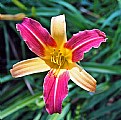
Chris Hayward
(K=1519) - Comment Date 4/3/2004
|
What an intersting question. Has anyone tried this (using color correction filters instead of using white balance)? And would you use the same filters on a CCD imager that you use for film?
I would have expected that for small broadband changes that one one get similar effects from a color correction filter or from white balance. However, if you go to something more narrow band, or are shooting in low light, I might expect that the effect was different. Perhaps one of our dual film/digital folks could do a one shot test?
|
|
|
|

Craig Wiernik
(K=312) - Comment Date 4/6/2004
|
Digital cameras let you set the white balance, which means you don't need correction filters - just change the white blanace - it's kinda like the difference between daylight and tungsten film at the touch of a button...
|
|
|
|

Chris Hayward
(K=1519) - Comment Date 4/6/2004
|
I've done some more studying and the experts (well those that publish on the internet) agree w/ Craig that for most digital cameras with a WB adjustment, it just doesn't seem necessary to put a pale filter in front of the lens to do color correction. However, I did run across some other interesting information related to the "art" effects ---
With manual WB, apparently you can achieve equivalent effects by doing a WB on a card that is off-white - a little warm or a little cool depending on what you want to do to the scene.
I'm not sure that this general statement would be true for really perverse lighting - like deep underwater - where you may want to try to balance the exposure of the 3 CCD colors a little before letting the camera do the WB.
|
|
|
|

Asher Khan
(K=1459) - Comment Date 4/11/2004
|
Thanks a lot chris and craig.
|
|
|
|
















